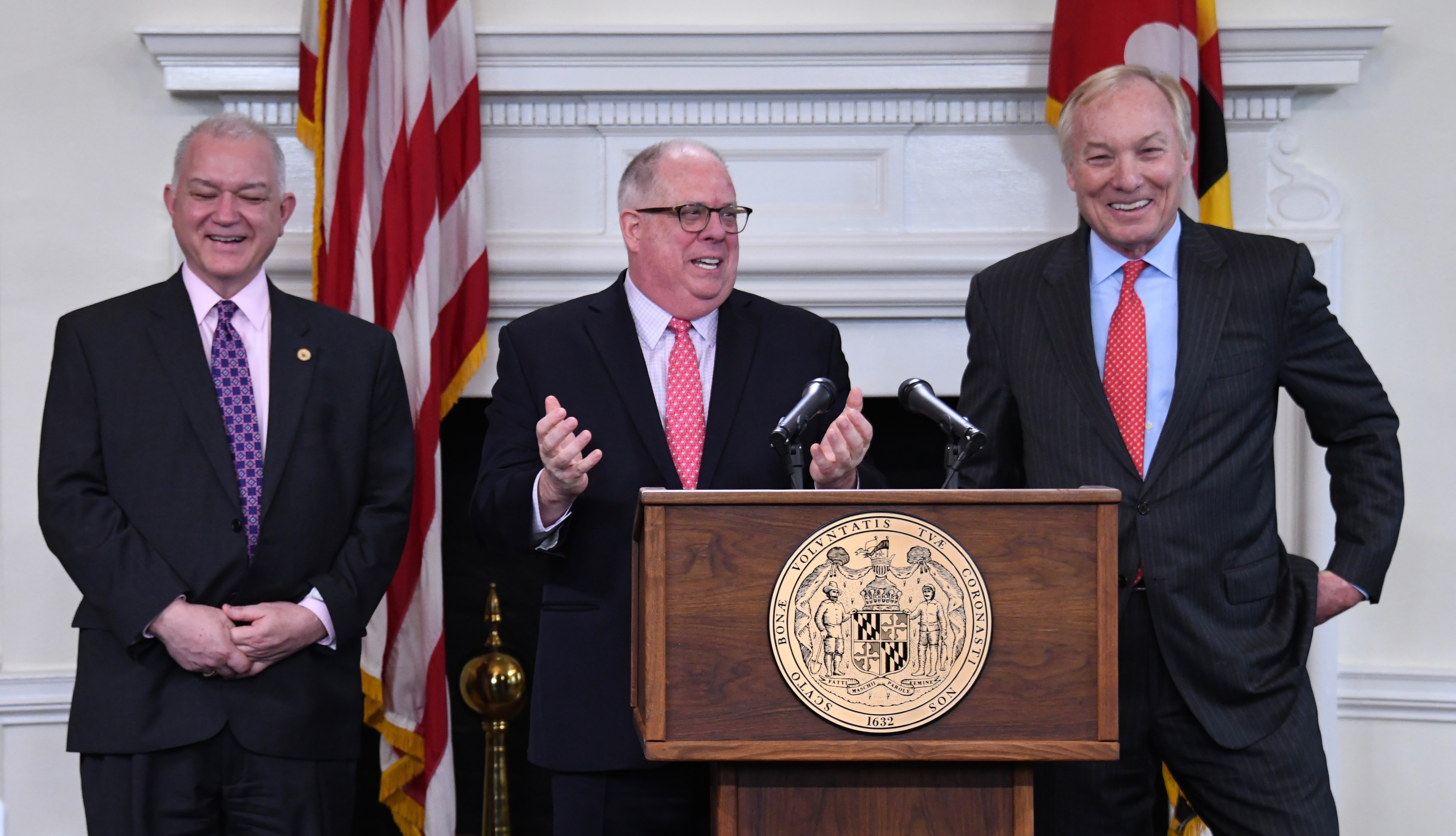By Len Lazarick
When Gov. Larry Hogan strode to the podium Wednesday, and started talking about a lockbox for the Education Trust Fund from casino revenues, it had a familiar ring to it.
Didn’t Democratic legislators propose a similar lockbox just two weeks ago?
The two proposals have somewhat similar goals, but different approaches for increasing education spending.
The Democrats want a constitutional amendment that they will send to the voters for approval in November. The governor wants to do his lockbox by statute without any additional voter approval.
Both sides admit that when Maryland voters approved slot machine gambling in 2008, they were promised half the additional revenues would be used exclusively for education. Instead in the midst of the Great Recession, those casino revenues simply replaced other money that was being spent on public schools. “Tots for Slots” was a hollow promise.
“This is money that has been promised that they have not been receiving,” Hogan said.
Details lacking
Other than the broad strokes of policy offered at two different press conferences, we don’t know exactly how the proposals will work.
The Democrats are planning to introduce their constitutional amendment on Thursday, more than two weeks after the huge press conference attended by what seemed like more than half the legislature.
The governor also did not provide the actual legislation he will offer.
This has become a common pattern lately in Annapolis. Big promises are made at press conferences, with details to follow later, after reporters with short attention spans move on to other issues. Not that reporters read the actual bills any more closely than many legislators, but staffers and analysts do, and there is more to go on than a sketchy press release.
No matter. State polling consistently shows education is one of the most important issues for Maryland voters. More money for schools is a winning issue in an election year.
Education advocates, particularly the teachers union and representatives of local school systems, were deeply disappointed when the Kirwan Commission on Innovation and Excellence in Education was unable to meet its December deadline for changes in education funding formulas.
Before the commission began meeting, a high-paid education consulting firm was paid more than $845,000 to issue a thick report that schools were underfunded by almost $3 billion.
The lockbox to funnel an additional $500 million to schools on top of the $6.5 billion already going to local school systems was the educators’ response with the help of their legislative allies.
Advantages of a constitutional amendment
The constitutional amendment has three major political advantages.
One, by putting it in the constitution, it is much more difficult to change. Any amendment would again require a supermajority of the legislature, and a voter referendum.
Two, a constitutional amendment eliminates the governor’s role in the process. Once the legislature passes it, it goes directly to the voters.
Three, putting education funding on the ballot energizes more progressive Democratic voters than Republicans. Democratic candidates for governor have already been using education funding as a club against Republican Hogan, despite his well-documented record funding of education — in accord with the mandates in law he rails against.
Hogan’s lockbox is far easier to pick open than a constitutional amendment despite his assertion that “a lockbox is a lockbox.” It can be changed by the same kind of budget legislation that allowed the past raids he decries on highway user revenues, open space money and Bay restoration funds.
Hogan sees his proposal as a different kind of mandate because it implements what was approved directly by voters in the slots referendum, and not their representatives in the legislature.
Where the money comes from
Both proposals are silent about where this extra money will come from. Hogan promises his plan will not require tax increases.
Comptroller Peter Franchot, who joined the governor at the podium in supporting his version of the lockbox, vociferously denied that an increase in education funding would require cuts in other programs — even while conceding he made similar arguments when he was a member of the House Appropriations Committee.
“We have enormous resources in Maryland,” Franchot said. “Money is not the issue…. It’s the kids that will benefit.”
“This is one for the kids — sincerely for the kids,” he said.
Spending more on the kids is popular with voters but it doesn’t change the long term fiscal picture that state spending continues to go up more than state revenues.




Recent Comments